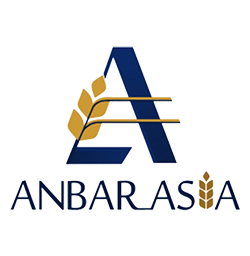The global economic landscape continues to shift as industries adapt to new challenges and opportunities. Recent developments in the sustainability of food supply chains, the poultry industry’s response to avian flu outbreaks, and innovations in aquafeed illustrate the interconnectedness of global trade and economies. These changes highlight key areas of growth, regulatory compliance, and market expansion.
Consumer demand for sustainable products is reshaping the food and beverage industry. According to surveys, 78% of consumers prioritize a sustainable lifestyle, influencing purchasing behavior. Products with environmental, social, and governance (ESG) claims are experiencing higher growth rates across two-thirds of market categories. This shift is pressuring supply chain participants—from ingredients companies to retailers—to adopt sustainable practices to meet regulatory standards and consumer expectations.
Retailers play a pivotal role by promoting sustainability as a competitive advantage. By enhancing their image through compliance and ethical practices, businesses can potentially improve financial performance by up to 20%. However, success depends on collaborative efforts with manufacturers and agricultural producers to ensure widespread adoption of sustainable farming and manufacturing methods. Such practices not only align with consumer values but also improve supply chain resilience, mitigating risks tied to climate change and resource scarcity.
The case of Olam Food Ingredients (ofi) exemplifies the benefits of integrating sustainability into supply chains. Ofi’s AtSource sustainability management system employs tools like carbon footprint calculators to identify inefficiencies and reduce environmental impacts. Through targeted interventions in its onion supply chain in Egypt, the company achieved a 30% reduction in both carbon and water footprints over five years. Recognition from the Sustainable Agriculture Initiative Platform’s Farm Sustainability Assessment further validates AtSource as a model for advancing sustainability across the agricultural sector. These efforts enhance trust and transparency, enabling downstream stakeholders to make informed sourcing decisions.
Meanwhile, the global poultry industry is grappling with the economic implications of H5N1 avian flu outbreaks. The United States Department of Agriculture (USDA) reported infections across eight states, including Georgia, which suffered its first outbreak at a commercial broiler farm housing 45,500 birds. Since 2022, over 138.7 million birds have been lost to the disease across all U.S. states and Puerto Rico. This has had a profound impact on poultry production, a major economic driver for states like Georgia, where it constitutes the top industry. Efforts to contain the disease, such as bans on poultry exhibits and enhanced pre-slaughter surveillance, are essential to minimize disruptions and rebuild trust in the supply chain.
Avian flu has also raised concerns about food safety. The Food and Drug Administration (FDA) and USDA recently called for reanalysis of pet food safety plans to address risks linked to H5N1-contaminated products. Enhanced monitoring and regulatory oversight aim to curb transmission risks, safeguard public health, and ensure market stability for poultry-derived products.
In the aquaculture sector, innovation is fostering both sustainability and cost-efficiency. A study conducted in Turkey demonstrated the benefits of including distiller's dried grains with solubles (DDGS) in rainbow trout diets. At a 20% inclusion rate, DDGS optimized fish growth and weight while significantly reducing feed costs. As aquaculture gains prominence in meeting global food demand, such findings underscore the potential for U.S. agricultural exports to capture new market share. The U.S. Grains Council has highlighted the study as evidence of growing demand for DDGS and corn-fermented proteins in aquafeed, particularly in the Europe, Middle East, and Africa (EMEA) region. These innovations promise lower input costs for producers and higher-quality fish for consumers.
The themes of sustainability, health, and innovation connect these developments, offering insights for global markets and trade. Importers and exporters must navigate an evolving regulatory landscape that increasingly prioritizes sustainable practices. The poultry and aquaculture industries demonstrate how supply chain disruptions and product innovations can reshape market opportunities, necessitating agility and collaboration among stakeholders.
As economies contend with these challenges and advancements, the interdependence of global industries becomes ever more apparent. Whether responding to consumer demands, managing disease outbreaks, or optimizing production processes, businesses that invest in sustainable and efficient practices are better positioned to thrive in a competitive marketplace.






